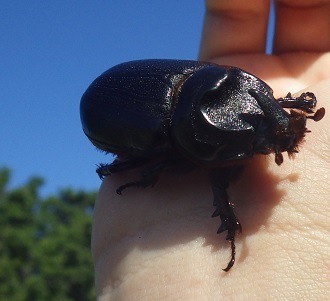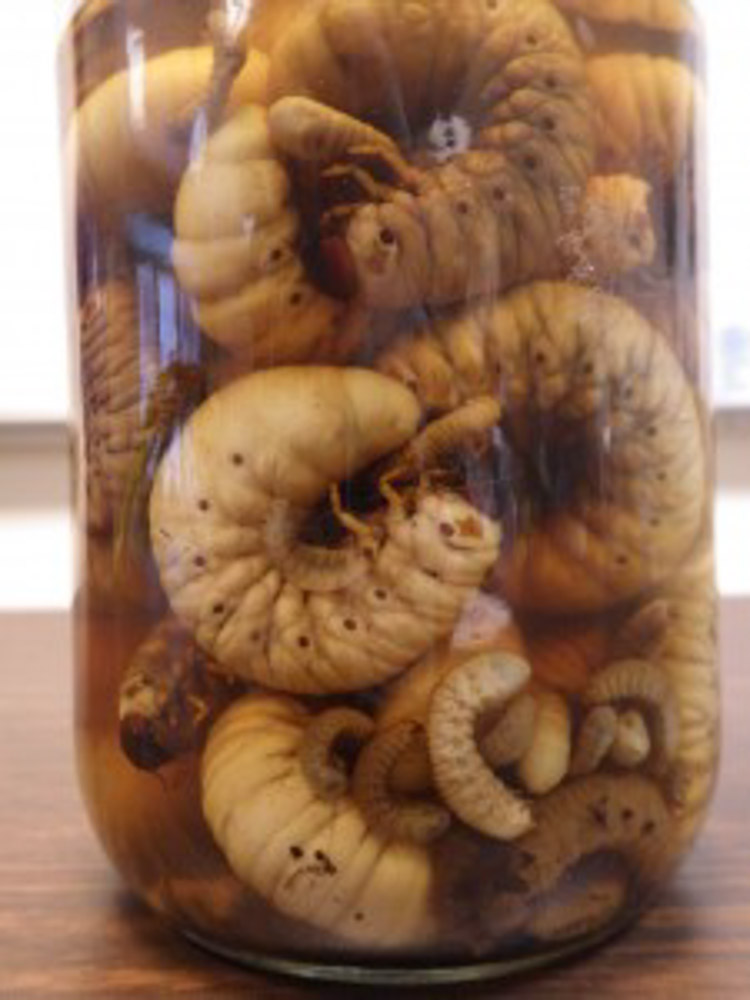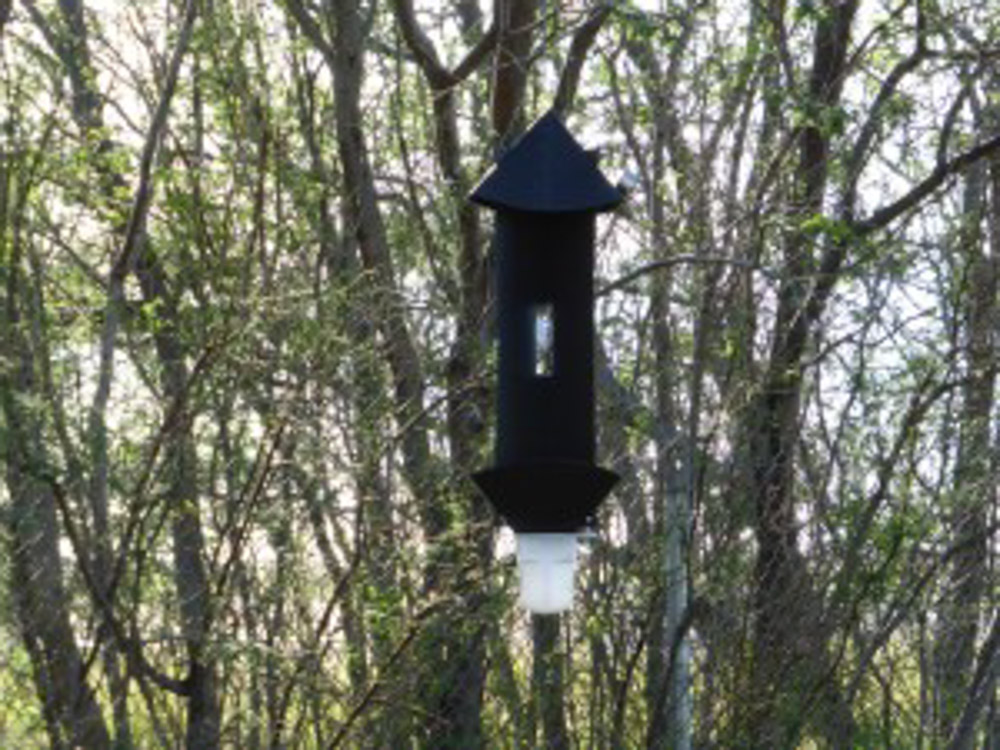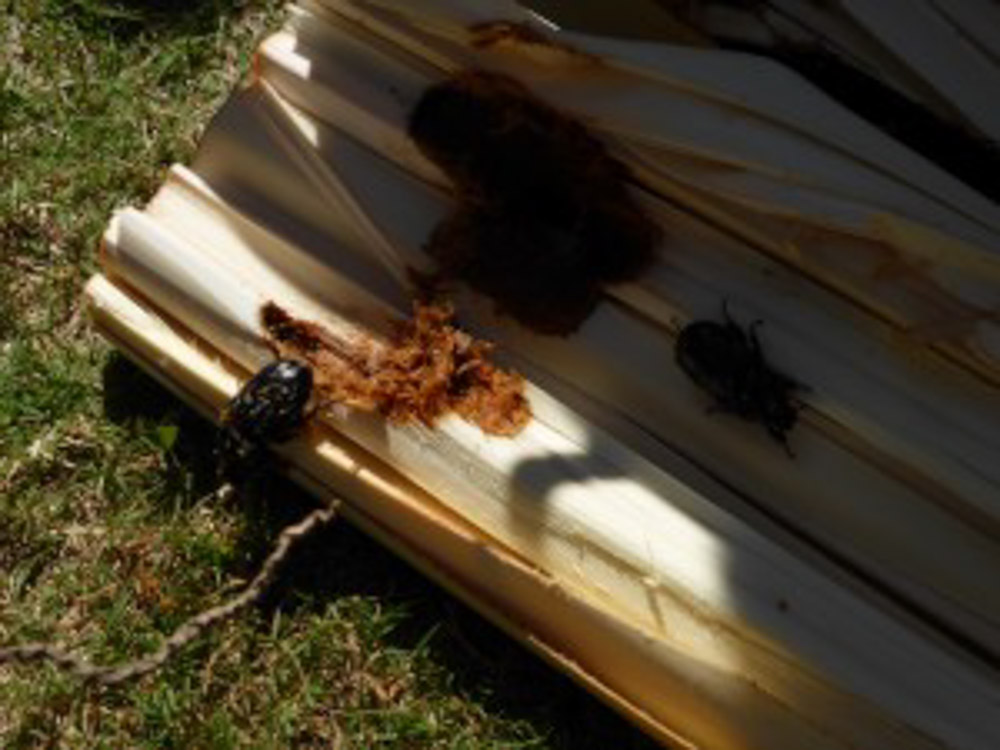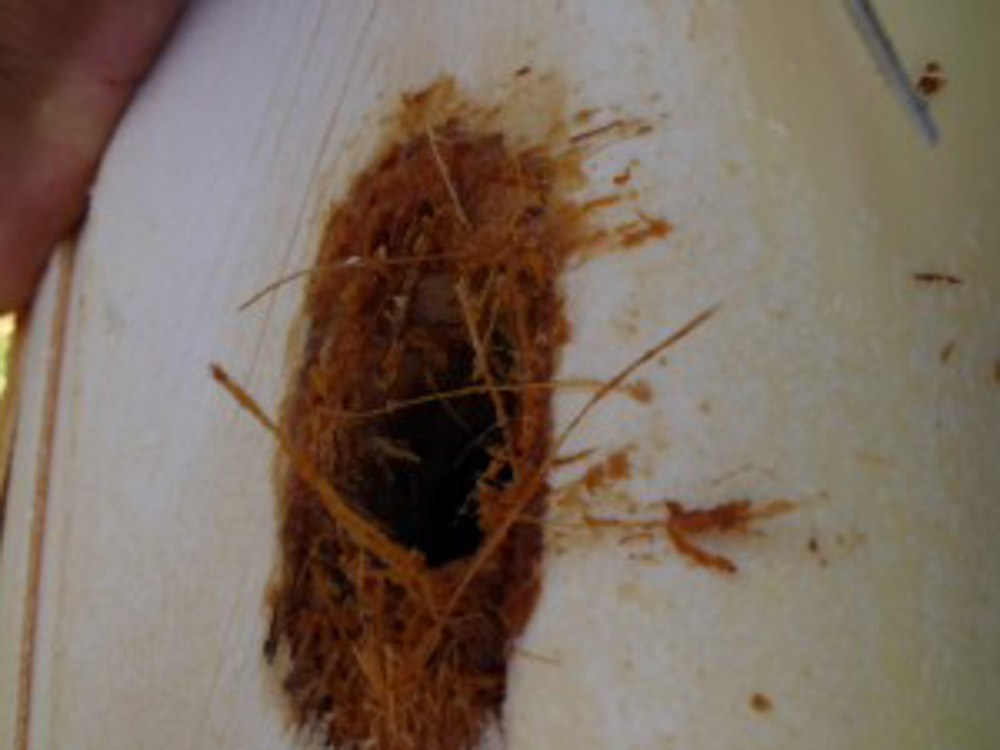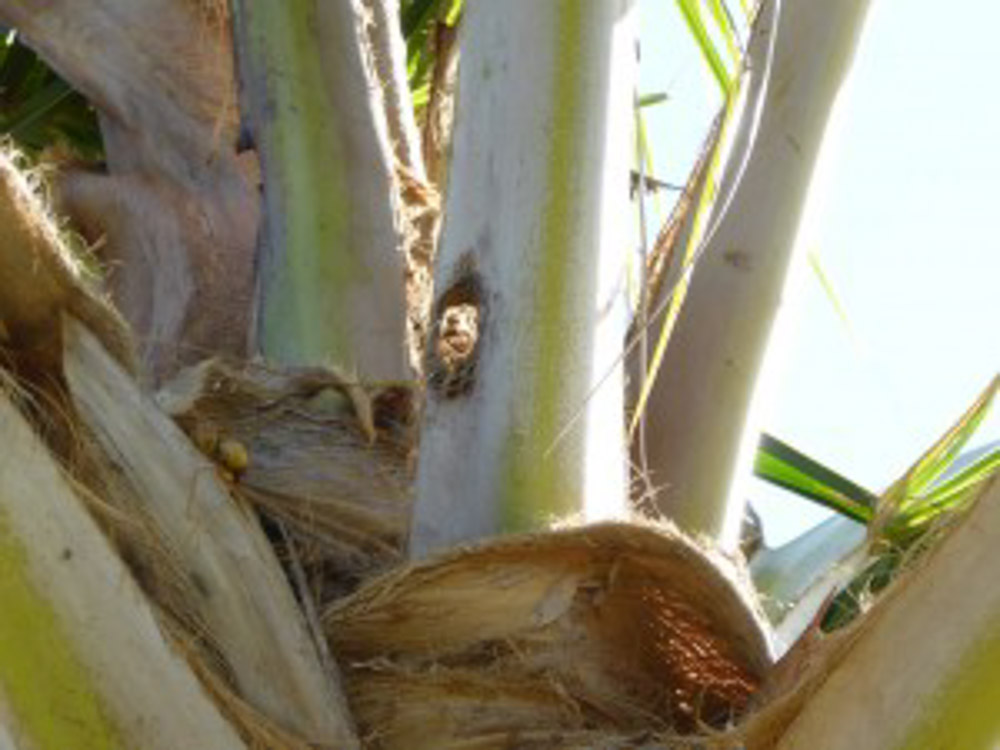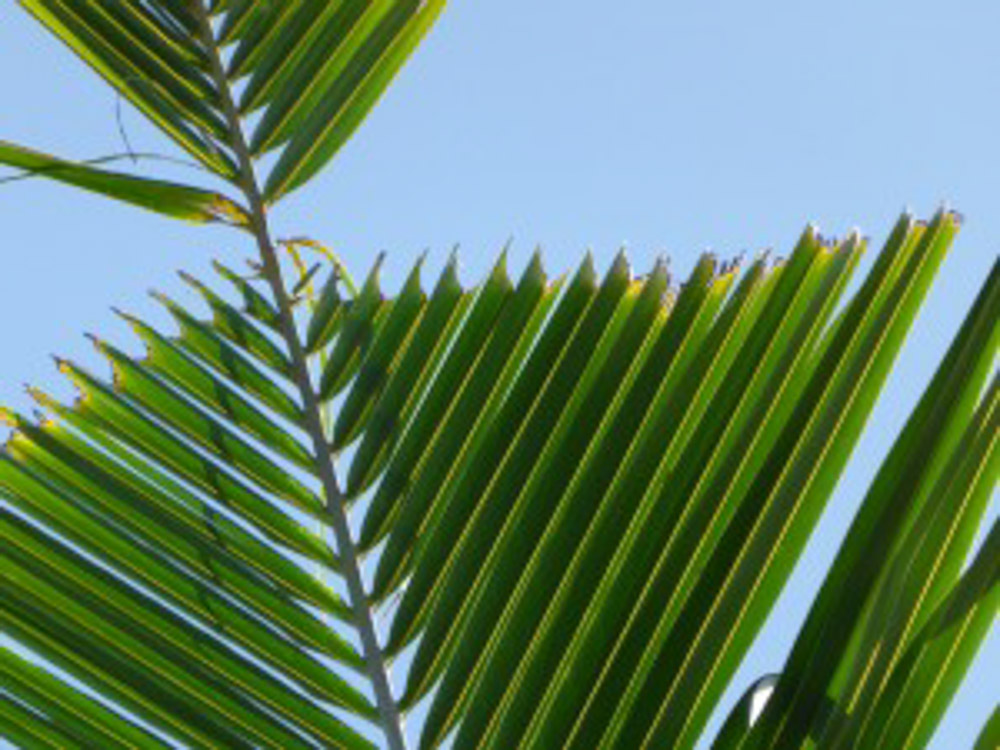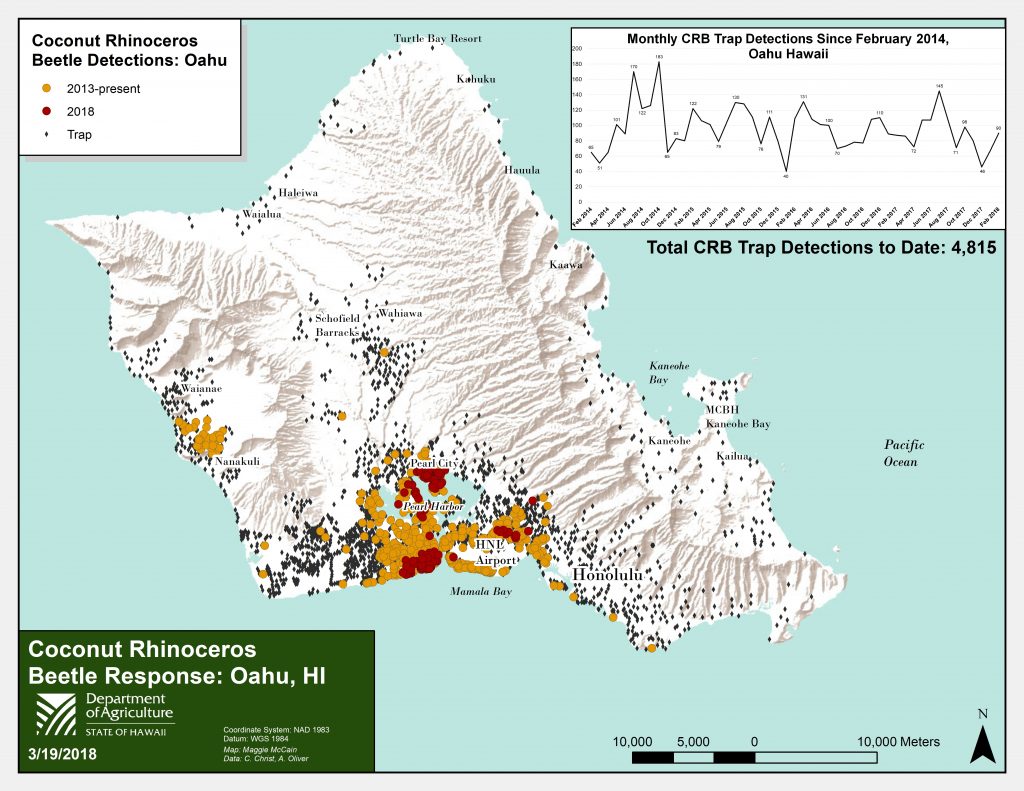Coconut Rhinoceros Beetle (Oryctes rhinoceros)
Family: Scarabaeidae
The coconut rhinoceros beetle (CRB) is a large scarab beetle that is native to Southeast Asia. It was accidentally introduced from Sri Lanka to Samoa in 1909 and is now distributed throughout the South Pacific. In its native range, the coconut rhinoceros beetle can be attacked by a variety of predators at all life stages and is also susceptible to a fungus and a virus that keep the populations in check. CRB is one of the most damaging pests of coconut palms and could pose a threat to other species including Hawaii’s only native and endangered palm, the Loulu (genus Pritchardia). The Hawaiʻi Dept. of Agriculture and the CRB Response are leading the efforts to combat CRB. Management of Oʻahu has shifted from eradiction to containment. All detections on other islands are still in the eradication phase.
Description:
- Adult coconut rhinoceros beetles are about 30-60mm long (about 2 inches) solid, black beetles.
- Both male and female CRB have a horn on their head, though the male’s horn is more than twice as long as the female’s.
- Eggs are laid and develop inside rotting coconut logs, mulch or compost piles.
- Eggs hatch into C-shaped, larval grubs that can grow to be 60-105mm (2.3-4.1 inches) long.
- Grubs feed on decaying wood and organic material for about 4-6 months before pupating.
- After a pupation phase of about 2 weeks, adults emerge.
- Adult CRB are active at night and live between 4-9 months.
Look-a-Like:
Oriental flower beetles have been in Hawai’i since 2002 and are widespread. The oriental flower beetle is the largest beetle on O’ahu and is often mistaken for the Coconut Rhinoceros Beetle, however there are some distinct difference that can help you identify between the two beetles. PHOTO COMPARISON
- Oriental flower beetles do not have an upturned “horn” like CRB.
- Oriental flower beetles are about one inch long (about half the size of CRB).
- Oriental flower beetles have mottled white patches, while CRB are solid black.
- Larval stages look very similar, but oriental flower beetle grubs wiggle on their back, while CRB grubs wiggle on their side.
Harm:
- Adult CRB bore into the crowns of coconut palms to eat developing leaves.
- CRB-damaged palm fronds have distinct geometric notching, appearing to have been cut by scissors.
- The damage to palms and their fronds can outright kill the tree or leave it susceptible to disease.
- Grubs can be spread through green waste transfer.
- Adults can spread through flight, hitchhiking, and in high wind events.
- Threatens the endemic and endangered fan palms, Loulu.
- CRB also poses threats to all oil palms, pandanus trees, and banana trees.
Distribution:
O’ahu: Status = Containment
- First detected on O’ahu in December 2013, CRB has been spreading. This management strategy has shifted from eradication to containment to reduce detections on neighboring islands.
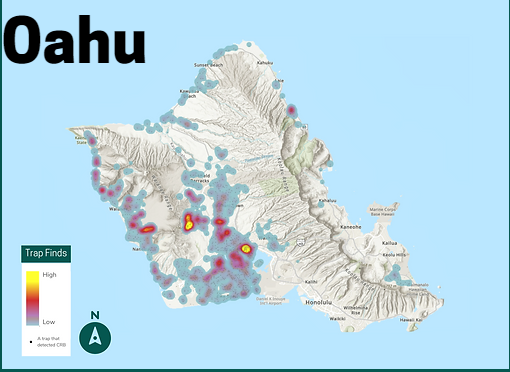
- Kauaʻi: May 31, 2023: Kauaʻi Invasive Species Committee found two adult beetles in traps near a green waste transfer station close to the Līhuʻe Airport. These were the first detections outside of Oʻahu.
- Maui: September 14, 2023: A dead, adult beetle was found in soil bags at a big box store. 15 bags of composting soil was quarantined and shipped back to Oʻahu, where they originated.
- Nov. 24, 2023: Kihei: Breeding site found. Larvae were discovered by an arborist in the crown of a dead coconut palm tree. 12 trees were felled, chipped and fumigated.
- Hawaiʻi Island: October 11, 2023: A Waikaloa Village resident found 5 grubs in a decaying palm tree stump.
For the latest updates, visit: www.crbhawaii.org
Reporting:
Oʻahu:
- Since the management has shifted from eradication to containment, it is not necessary to report beetles in infested areas. For a map of infested areas, click HERE
- Found a beetle? Please freeze the beetle overnight to ensure it’s dead. Dead beetles can be thrown away.
- Is it CRB? If you need help IDing, email pictures to either: info@crb.org OR oisc@hawaii.edu
- Have CRB Infestation or want to prevent it? CLICK HERE FOR POSSIBLE TREATMENT OPTIONS
Kauaʻi, Maui, Molokaʻi, Lanaʻi, Hawaiʻi Island:
- Capture the beetle (adult or larvae) and put it in a hard plastic or glass jar. If you do not have a container to put the beetle in, please crush it.
- Record where you found it and call the CRB Response immediately at 808-679-5244 or email info@crbhawaii.org.
